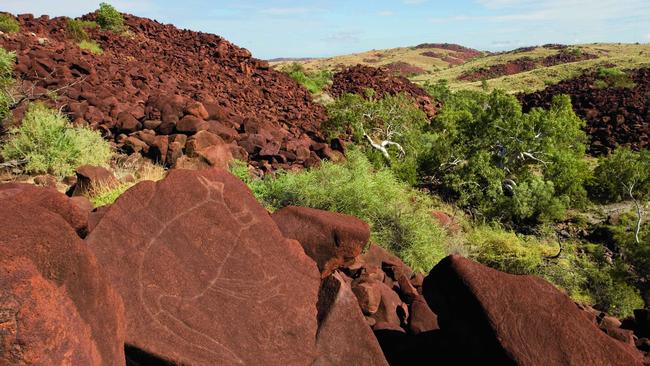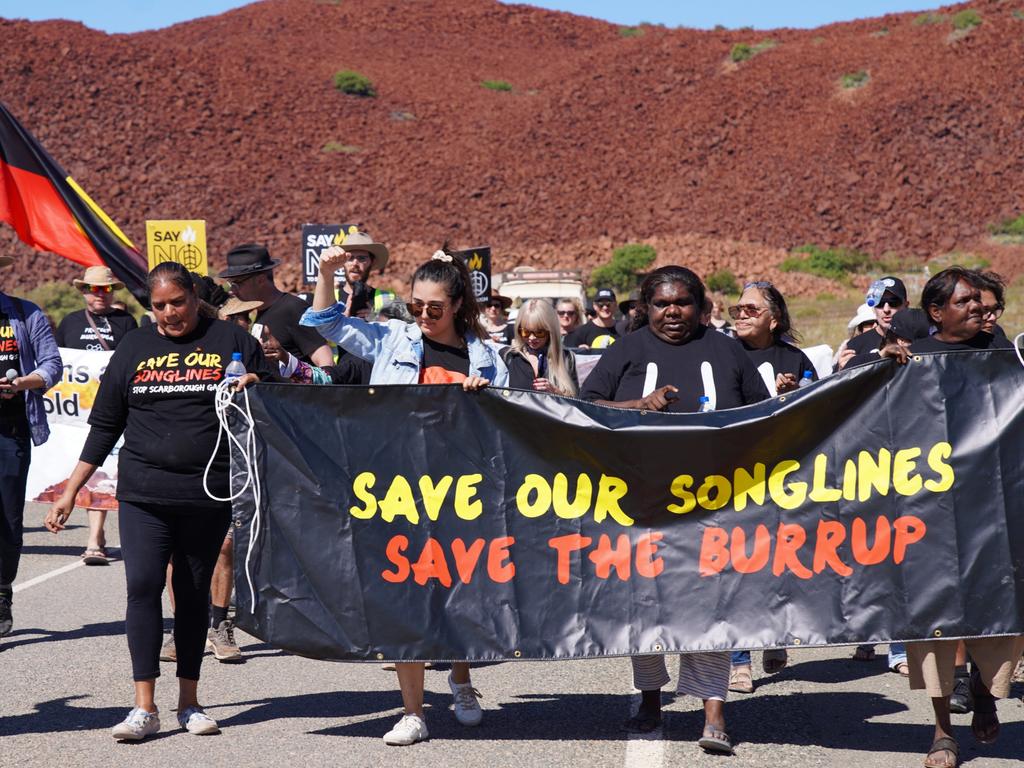Elders ‘objected to Burrup rock art relocation’
The Aboriginal group responsible for WA’s Burrup Peninsula repeatedly objected to the relocation of rock art as part of a $4.5bn urea plant development.

The Aboriginal group responsible for Western Australia’s Burrup Peninsula repeatedly objected to the relocation of rock art as part of a $4.5bn urea plant development, contrasting with the justifications given by Environment Minister Tanya Plibersek when she gave the project the all-clear this week.
A letter written in June by Murujuga Aboriginal Corporation chief executive Peter Jeffries and sent to the federal Department of Agriculture, Water and the Environment and obtained by The Australian also flags concerns about whether the eventual decision by the group’s Circle of Elders to support the rock art relocation plan met the standards of “free, prior and informed consent”.
It also details what it says is the uneven playing field in negotiations between Aboriginal corporations and major projects backed by a supportive state government.
Ms Plibersek on Tuesday formally rejected an application made by an Indigenous splinter group called Save Our Songlines seeking a formal halt to construction work at the site for 30 days. The minister said she had decided not to intervene, given MAC – which represents the five language groups of the area – had not supported the application.
She noted that MAC had made agreements with the company behind the plan, Perdaman, on the appropriate cultural treatment of the sites.
Perdaman and MAC have been in discussions on the plant since 2018 and it is understood Perdaman has made several extra undertakings to MAC in the weeks since Ms Plibersek began weighing up the application.
Perdaman chairman Vikas Rambal told The Australian MAC had supported the final design, with Perdaman having worked to avoid as much impact on cultural heritage as possible. He said Ms Plibersek’s statement announcing the decision made it clear that MAC and the Circle of Elders supported Perdaman’s heritage and development plans.
The June letter from Mr Jeffries describes how the group’s elders arrived at a decision supporting the relocation of the rock art only after they were told it could not remain in its existing location.
The letter says Perdaman repeatedly advised the elders that there was no way to redesign the plant in such a way that would leave the site intact and accessible.
“The Circle of Elders have made it clear on numerous occasions that their preference is for the rock art to remain in situ and undisturbed,” the letter says.
“Perdaman, Clough and their heritage adviser have advised on numerous occasions that this was not possible and the Circle of Elders made recommendations to relocate these sites on that basis.”
The letter also details how MAC had no authority to approve or reject any developments in the area, with its role limited to making recommendations regarding only heritage issues. It says the group’s preference was for less development across the Burrup.
The Burrup Peninsula is home to more than a million different petroglyphs, many of which date back tens of thousands of years, and is at the centre of a proposed UNESCO World Heritage site listing. The project is also home to some of Australia’s largest industrial projects, including the North West Shelf and Pluto LNG plants.
The North West Shelf is seeking approvals to extend its operations out to 2070, while ground was broken on an expansion of the Pluto plant on Wednesday.
Mr Jeffries said the situation on the Burrup highlighted issues around whether approvals had been given according to the principles of free, prior and informed consent. “There are serious, far broader issues that need to be addressed regarding the equality of negotiation between Aboriginal Corporations and proponents, particularly where the state government has publicly committed to changing legislation in favour of development on Murujuga and where proponents only consider a negotiation to be complete upon receiving the answer they want,” he wrote.
The letter refutes some assertions made by Save Our Songlines in its application for intervention. The leaders of Save Our Songlines include former MAC chairwoman Raelene Cooper, and the group has accused MAC of being co-opted by major corporations with assets in the Burrup.
Mr Jeffries said in his letter Perdaman had undertaken “consistent and respectful negotiation with MAC” and had taken significant time to consider the group’s “heritage, cultural and environmental concerns”.







To join the conversation, please log in. Don't have an account? Register
Join the conversation, you are commenting as Logout